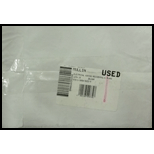
ELECTRICAL WIRING:RESIDENTAL-6 PLANS
18th Edition
ISBN: 9781305098329
Author: MULLIN
Publisher: CENGAGE L
expand_more
expand_more
format_list_bulleted
Concept explainers
Question
Chapter 8, Problem 11R
To determine
Explain the process of grounding of wall boxes.
Expert Solution & Answer
Trending nowThis is a popular solution!

Students have asked these similar questions
Don't use ai to answer I will report you answer
help on this question about three-phase half-wave rectifier? Also it envolves a little bit of signals and systems.
Don't use ai to answer I will report you answer
Chapter 8 Solutions
ELECTRICAL WIRING:RESIDENTAL-6 PLANS
Ch. 8 - Prob. 1RCh. 8 - Prob. 2RCh. 8 - A good rule to follow is to never load a circuit...Ch. 8 - Prob. 4RCh. 8 - For residential wiring, not less than one...Ch. 8 - For this residence, what are the estimated...Ch. 8 - a. What is the ampere rating of circuit A16?...Ch. 8 - The NEC requires what type of unique protection...Ch. 8 - Prob. 9RCh. 8 - Prob. 10R
Ch. 8 - Prob. 11RCh. 8 - Prob. 12RCh. 8 - Is the switched portion of an outlet mounted...Ch. 8 - The following problems pertain to luminaires in...Ch. 8 - How many switches are in the bedroom circuit, what...Ch. 8 - The following is a layout of the lighting circuit...Ch. 8 - Prob. 17RCh. 8 - The Code uses the terms watts, volt-amperes, kW,...Ch. 8 - How many 14 AWG conductors are permitted in a...Ch. 8 - A 4 in. 1 in. octagon box has one cable clamp and...
Knowledge Booster
Learn more about
Need a deep-dive on the concept behind this application? Look no further. Learn more about this topic, electrical-engineering and related others by exploring similar questions and additional content below.Similar questions
- Correlation of experimental data for the average heat transfer coefficient for turbulent flow through tubes is given by NUD =hD/k=0.023 (Rep) 0.8 (Pr) 1/3 The Reynolds number, Re₁ = πD/v, is based on the tube diameter D, the average flow velocity ū and the kinematic viscosity v. Consider the flow of air and of water through tubes of identical size. Assume that the average velocity is the same for both fluids. If the average temperature for both fluids is 80°C, determine the ratio of the heat transfer coefficient of water to that of air.arrow_forwardDon't use ai to answer I will report you answerarrow_forwardDon't use ai to answer I will report you answerarrow_forward
- help on questions about singals and systems?arrow_forwardDon't use ai to answer I will report you answerarrow_forwardI have this code in matlab: clc; n=0:8; %20 harmonic indices jn=besselj(n,5);% 5 is the modulation index jnn=abs(jn); jn1 = 20.*log10(jnn*0.5); fc=1e+6; %carrier frequency fm=10e+3; %message frequency frq1 = (fc+n.*fm)*1e-06; frq2 = (fc-n.*fm)*1e-06; frequencies = [frq2,frq1]; %Lower and upper side magnitudes = [jn1,jn1]; %Magnitude of Jn corresponding to the frequencies % Plot figure; stem(frequencies, magnitudes, 'filled'); % Stem plot for spectrum visualization title('Magnitude Spectrum of FM Signal'); xlabel('Frequency (MHz)'); ylabel('Magnitude'); grid on; I am getting the lines opposite (the line should be traced from bottom to top not from top to bottom) as shown in the picture. How can I fix this?arrow_forward
- Don't use ai to answer I will report you answerarrow_forward.I need in the way of spaces and not in shortened ways A 3-phase, 50 Hz, 132 kV overhead line transpose system of bundle conductors .a radius of conductor is 0.5 cm Calculate the total inductance of the line.) bi 4m C1 al 4m m birarrow_forward1B) Suppose the flip-flops are 74F74 devices and the AND gates are 74F08 devices. Let maxtpd,D=9ns, maxtsu,D=3ns, and maxtpd,AND=6ns. What is the maximum clock frequency at which the circuit can operate reliably? 2) Compare serial transmission and parallel transmission and discuss their advantages and disadvantages. 3) Explain briefly how the slave can protect itself from being overwhelmed by the master in I2 4) A hypothetical logic family has the following specifications. VOH=4.6V VIH=4.0V VOL=0.5V VIL=1.0V IOH=-1mA IIH=50μA IOL=8mA IIL=-0.6mA (4a) What are the noise margins? (4b) What is the fan-out capability? That is, suppose all gates are chosen from the same logic family, how many gates can an output gate reliably drive? 5) Explain briefly why USB device address and…arrow_forward
- can you drow set Vi=0, set Vo=0 B. For the FET amplifier circuit of Fig.(2), determine the topolgy, and the gain without and with feedback with the following circuit values: rao, and g 4mS Is Voo 60 K www 100 K 0.25 K IK Fig.(2) 20 K ww Voarrow_forwardcan you draw acircuit For the feedback circuit shown below VDD Set Vico set Vo=0 Is 100 K 26 K 2 K Q1 76 K IF 60 K 40 K Voarrow_forwardThe previous solutions are incorrect and unclear. If possible, please solve the question on the images .clearly. Thank you A 3-phase, 50 Hz, 132 kV overhead line transpose system of bundle conductors .a radius of conductor is 0.5 cm. Calculate the total inductance of the line. bi 4m m im birarrow_forward
arrow_back_ios
SEE MORE QUESTIONS
arrow_forward_ios
Recommended textbooks for you
 EBK ELECTRICAL WIRING RESIDENTIALElectrical EngineeringISBN:9781337516549Author:SimmonsPublisher:CENGAGE LEARNING - CONSIGNMENT
EBK ELECTRICAL WIRING RESIDENTIALElectrical EngineeringISBN:9781337516549Author:SimmonsPublisher:CENGAGE LEARNING - CONSIGNMENT

EBK ELECTRICAL WIRING RESIDENTIAL
Electrical Engineering
ISBN:9781337516549
Author:Simmons
Publisher:CENGAGE LEARNING - CONSIGNMENT